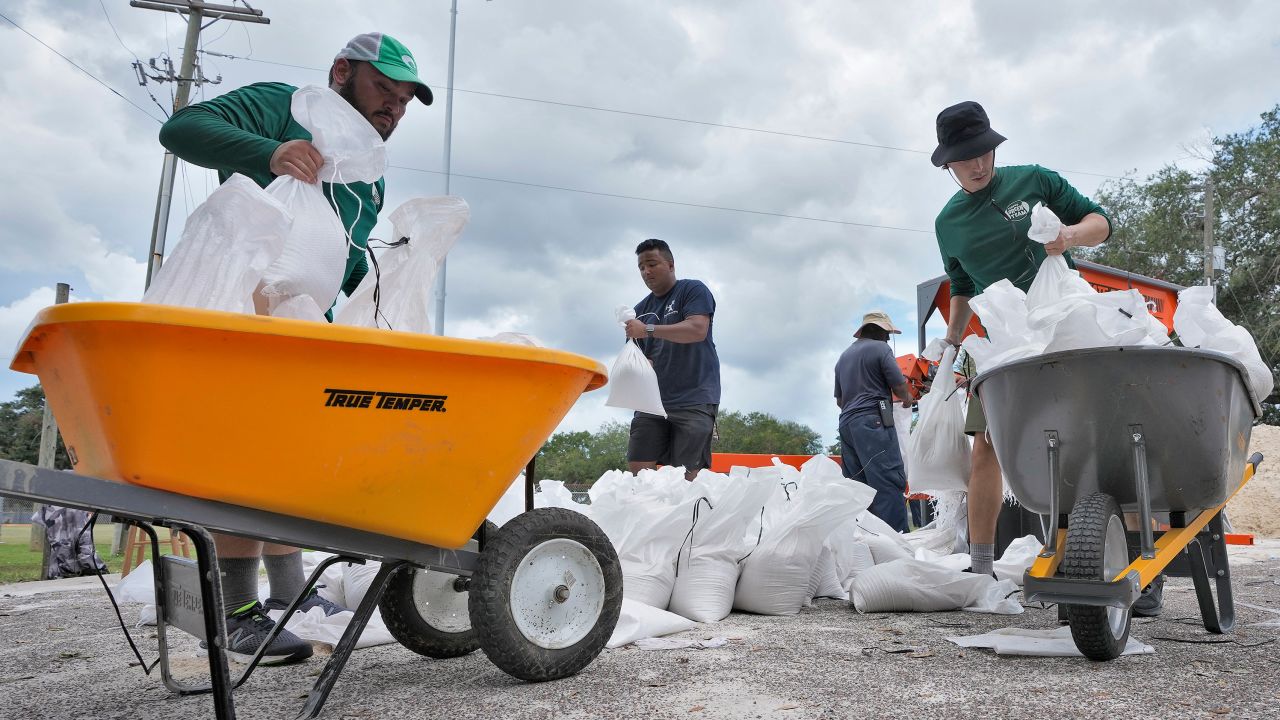Editor’s note: Hit by a storm? Use CNN Lite site For low frequency.
CNN
—
Italia strengthened into a hurricane with maximum sustained winds of 75 mph and strong winds before making landfall in Florida on Wednesday.
Track Idalia here >>
Evacuations have been initiated as the storm could deliver a devastating blow to parts of Florida’s Gulf Coast with life-threatening storm surge and damaging winds, and the National Guard has been called in. It’s expected to make landfall north of Tampa in Florida’s Big Bend region — but a slight change in track could put the vulnerable population center at greater risk.
Ahead of landfall, Italia could develop a few tornadoes along the west central Florida coast Tuesday and northward along the Big Bend Tuesday night.
Storm surge — when a storm’s winds push the ocean ashore — could raise water up to 12 feet in parts of North Florida, “Deep water … on the immediate coast in areas with onshore winds, accompanied by a surge. Large and dangerous waves,” the hurricane center warned.
Heavy rain could create flash flooding across Florida’s west coast and Panhandle and parts of southern Georgia Tuesday through Wednesday, spreading into parts of the eastern Carolinas Wednesday through Thursday. Those areas could get four to 8 inches of rain Tuesday through Thursday, flooding streets.
“This is going to be a major hurricane,” Gov. Ron DeSantis said at a news conference Monday.
The storm was 370 miles southwest of Tampa early Tuesday morning Hurricane Center said in a 5 a.m. update.
As the storm heads toward Florida, improvements have been seen across the state. Here’s the latest:
• Airports closed: Tampa International Airport will suspend all commercial operations beginning Tuesday and remain closed until later in the week to assess any damage, airport officials announced. The St. Pete-Clearwater International Airport terminal building will close Tuesday afternoon.
• Evacuation in at least 10 districts: Hillsborough, Franklin, Taylor, Levy, Citrus, Manatee, Pasco, Hernando, Pinellas and Sarasota counties have all urged residents to evacuate certain areas at risk.
• Schools closed: 32 county school districts have issued closures, as have colleges and universities, including Florida State University, the University of Florida and Florida A&M University.
• Emergencies declared: DeSantis expanded the emergency declaration to 46 of 67 Florida counties Monday morning. Several local jurisdictions have also declared states of emergency.
• Florida National Guard activated: More than 5,000 National Guardsmen were activated to help weather the storm.
• US Navy ships begin to depart: Navy ships have begun departing Florida ahead of Italy’s landfall, the Navy said Monday.
• Power outage expected: DeSantis told residents to prepare to be without power. “If you’re in the path of the storm, you should expect power outages, so please prepare for that,” the governor told residents Sunday.
• Services suspended by hospital system: Patients will be transferred from at least three hospitals: HCA Florida Pasadena Hospital, HCA Florida Trinity West Hospital and HCA Florida West Tampa Hospital.
“We want everyone to take this storm seriously,” Tampa Fire Rescue Chief Barbara Tripp said during a news conference, urging residents to clear debris from properties and watch out for neighbors who need help.
“Once the wind reaches a certain mile-per-hour speed, Tampa fire rescue will be unable to respond,” Tripp warned.
The storm is forecast to strengthen quickly as it tracks the Gulf of Mexico, before making landfall in Florida as it hits some of the warmest waters on the planet. If it does, it will join a growing list of devastating storms like Hurricane Ian, which leveled the Florida coast and killed more than 100 people.
Italia poses a “significant risk” of the event, the National Hurricane Center warned Monday, as it travels through the Gulf of Mexico.
Water temperatures around South Florida have soared to over 100 degrees Fahrenheit in some areas this summer, and overall temperatures in the Gulf have been record-warm, enough to support rapid strengthening.

Deadly storm surges of up to 12 feet could hit Florida’s Big Bend. Storm surge accounts for nearly half of hurricane-related deaths, the National Oceanic and Atmospheric Administration says, and is responsible for most storm surges.
Cedar Key could be cut off by heavy storm surge, said Jamie Rome, deputy director of the National Hurricane Center.
“I’m especially concerned for them,” Rome said during a conference call on Facebook Live. “If you are watching from Cedar Key, it is imperative that you take this very seriously, and if an evacuation is ordered, observe those evacuations immediately. An entire island can be completely cut off by such conditions.
Evacuation orders remain in place along coastlines due to projected storm surge, Rome stressed.
But coastal areas are not the only ones that get flooded. Inland areas receiving evacuees could see dangerous flooding and heavy rain from Italy. Andrew Kruskiewicz, a senior researcher at Columbia University’s School of Climate Science, warned that risks related to heavy rainfall could occur more than 100 miles from where the storm’s center made track.
“It’s something we’re seeing more and more, and it’s a climate change link because we’re seeing more wet tropical cyclones and wetter cyclones,” he told CNN. “Therefore, we need to pay more attention to the risks associated with extreme rainfall, especially in areas far from the coast.”